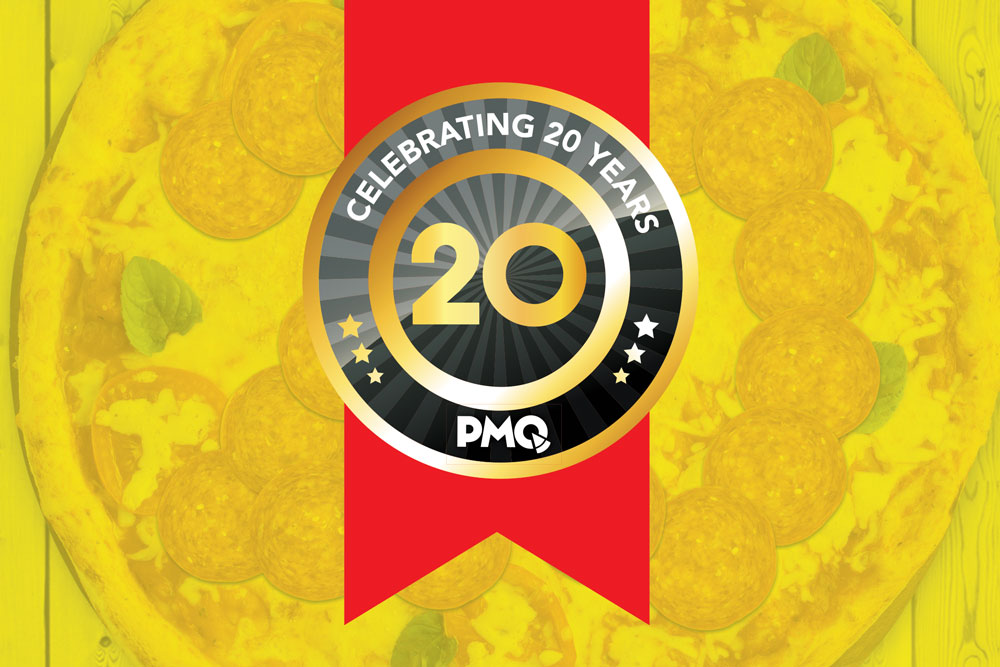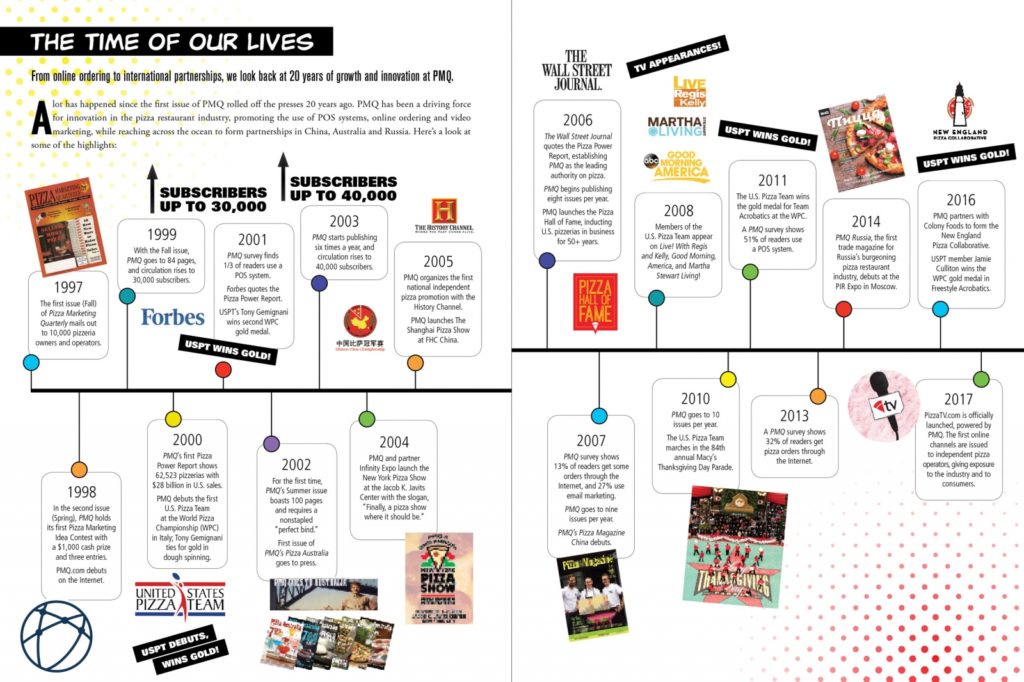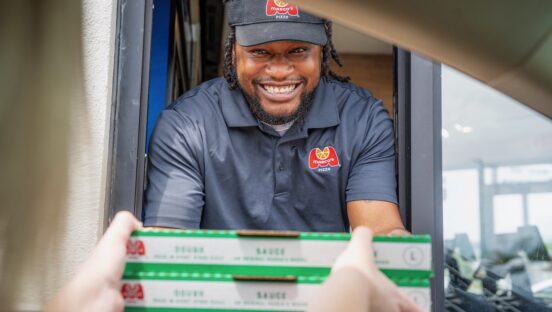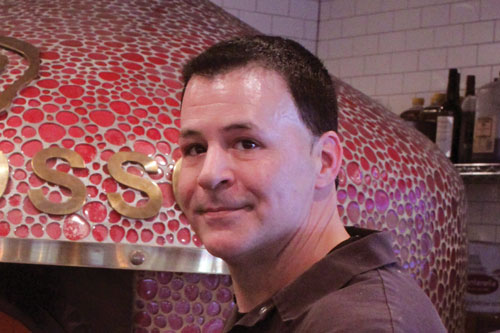
Putting in a Good Word: |
| “PMQ has had such a strong, positive impact on my life. It opened the door to many friendships that I cherish dearly today. I consider everyone I meet a friend, but when I think of PMQ, there’s a deeper connection. I think of family. Steve and Linda started something really special there in Oxford. Rick, Brian, Daniel, Eric, Brandy and Liz have all treated me so well—I’m beyond grateful. Thank you so much for doing what you do and for making the pizza world and business a much better place.”
— Lee Hunzinger, Chef, Zoli’s NY Pizza Tavern and Cane Rosso, Dallas |
Steve Green, CEO and founder: Before I started PMQ, I had already owned and managed Domino’s Pizza stores in California, New York and Mississippi, but it was my first job in pizza, in 1982, that opened my eyes to the potential of the pizza industry. I found I was good at selling pizza. As a store opening marketing specialist for Domino’s Pizza, I was tasked with creating and executing grand-opening marketing plans.
We broke a new national sales record for a store opening in Tupelo, Mississippi, by using direct mail, door hangers, and boxtopping. We also had a special bicycle built for six that we drove around town. We flyered all businesses and distributed cups with coupons to people on the streets, and we did radio and TV commercials. Since we were a large chain coming to a small Mississippi town, the best approach was to sound personal and local. We took a driver with a great Southern accent and presented him as the head guy [of the franchise]. Pizza Hut was so upset, they ordered a hot air balloon to give rides to people in town. So I got a local farmer with a plane carrying a streamer that said “Domino’s Pizza Delivers” to buzz his balloon ride. The newspapers picked it up, saying, “There’s a pizza war going on in Tupelo!” We ended up setting a new national sales record of $37,000, which stood for ten years.
I also created something called Green Mail. We were the first to take sales receipts and put them in a computer, creating databases and direct mail programs, measuring results. Then, while doing direct marketing for five regional chains, I started publishing a newsletter called Pizza Marketing Quarterly. The whole focus was on selling pizza. We started getting subscribers. I sold, printed, wrote and edited it and sent it out to our list of 10,000 pizzeria operators. It was very well-received and easy to write. My first four issues were basically case studies with real stories and real results from my own clients. The first issue was 36 pages, but within a year or so we grew to 68 pages. Linda came in on the second issue. I convinced her she could make more money selling ads for PMQ.
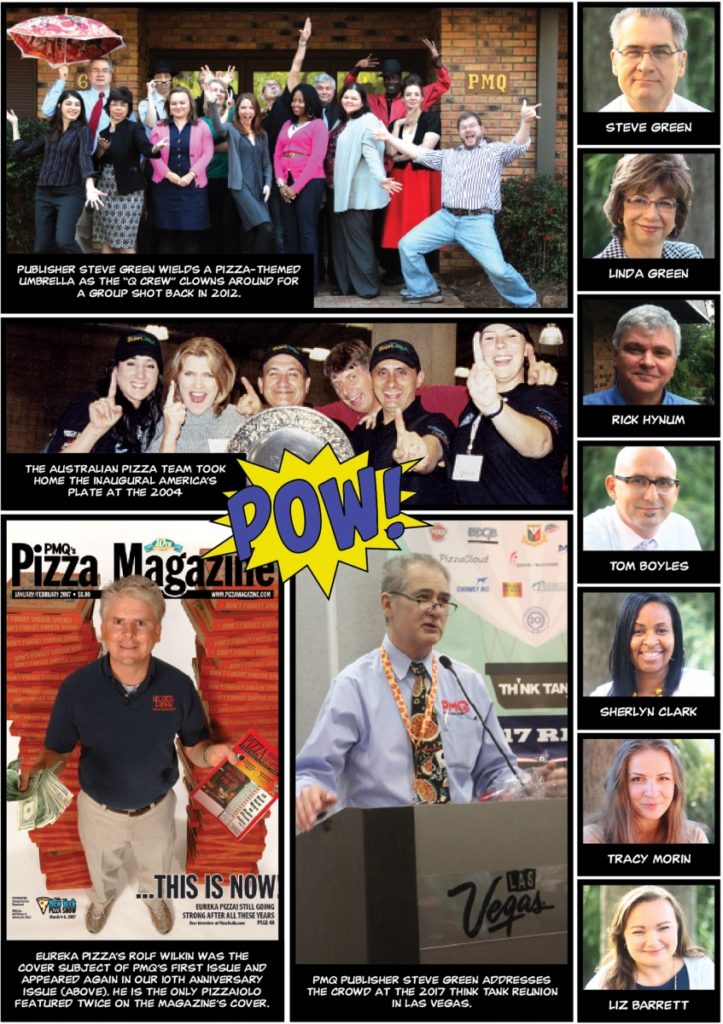
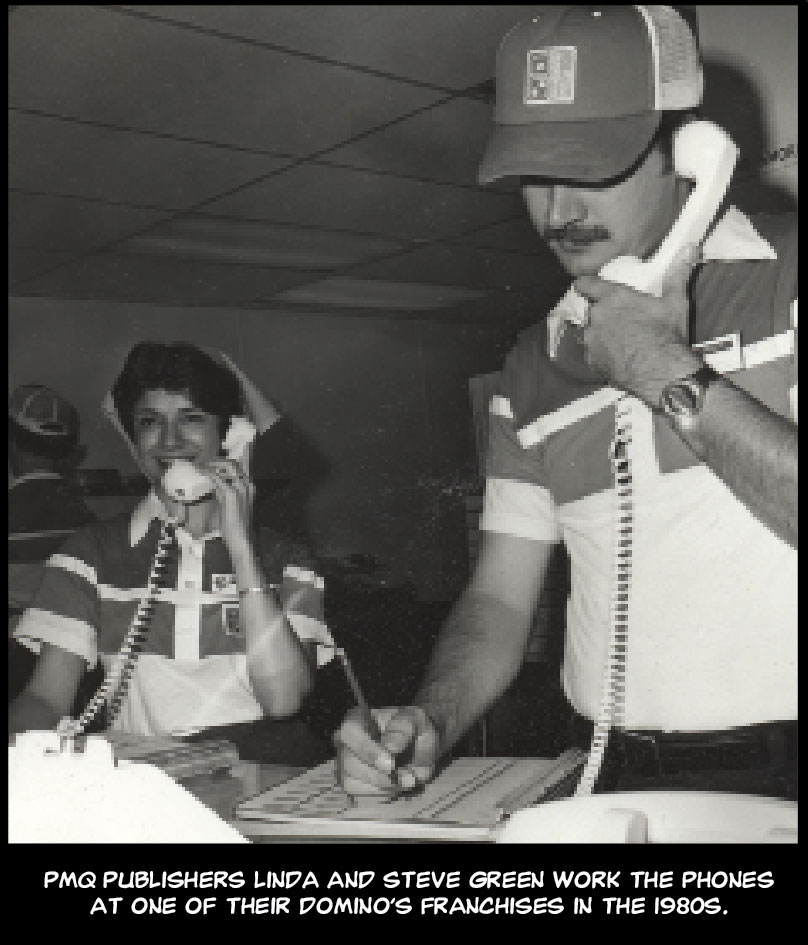 Linda Green, co-publisher: My father and his brother had a pizzeria in the 1950s, one of the first in San Jose, California. Back then, it was an ethnic food. My father would always talk about pizza in a way that made me feel comforted, and he would make it at home sometimes. The pizzeria lasted only a few years, but I always loved pizza, so when my husband wanted to start a pizza magazine, I felt really at home.
Linda Green, co-publisher: My father and his brother had a pizzeria in the 1950s, one of the first in San Jose, California. Back then, it was an ethnic food. My father would always talk about pizza in a way that made me feel comforted, and he would make it at home sometimes. The pizzeria lasted only a few years, but I always loved pizza, so when my husband wanted to start a pizza magazine, I felt really at home.
That was back in 1997. Steve always had a passion for the pizza industry and was looking for someone to help him. I had a thrift store, but it’s not that lucrative a business, as it turns out, and Steve and I have always been a good team as business partners. When we started, I was in sales. We offered a more affordable publication and more marketing ideas; we felt we could help the industry. I think people didn’t know if we were going to last.
Steve was very excited about launching the publication, and we started in our home. We had extra rooms in our house, so I’d get up in the morning, have coffee and welcome our couple of employees. I remember thinking it seemed a little crazy: Can we pay the bills with three children? But Steve’s a good salesman. He sold me on the idea, and I sold my thrift store.
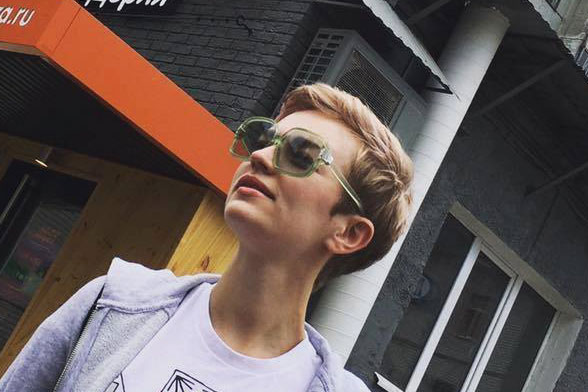
Putting In A Good Word: |
| “Without PMQ, Dodo Pizza wouldn’t be the same. We wanted to bring restaurant quality to the delivery market, and securing high-grade ingredients was the key to our business model. We found most of our suppliers through the magazine. Our pizzeria in Oxford, Mississippi, now boasts a small but efficiently organized kitchen—again, thanks to the contacts and tips found in PMQ. But most important for us was the inspiration and support we got from the editorial staff and the tight-knit PMQ community. It gave us the energy and knowledge we needed to overcome all the hurdles on the way to our dream of building a small IT-driven chain of artisan pizza delivery restaurants. Now this dream has come true: We’re opening our second location in Southaven, Mississippi, and looking for a place for the third. Thanks a million, PMQ!”
— Alena Tikhova, CEO, Dodo Pizza USA |
Tom Boyles, account executive/former editor-in-chief: I was in school in 2000 and looking for a job when I got a call from Steve Green, who interviewed me at his kitchen table. I always thought I’d work for Rolling Stone, and this was a pizza magazine. I started two weeks after I graduated. In their living room, Steve and Linda had a desk opposite each other, and my “office” was the den. My desk was a ping-pong table. I thought, “What did I get myself into?” But it was really exciting. Starting small like that, there wasn’t some preconceived notion of what we must write about, so we did stories on the little guys. I think that really helped build our magazine.
Steve: We were working out of our home, in our rec room, for about three years—until a neighbor complained about too many cars in our front yard. We were forced to move to an office, which was the best thing we ever did.
Tom: In a few months, we had an office with a receptionist and two phone lines. We were movin’ on up! If you wanted to be on the Internet, only one person could be on the phone. It was like working in a closet; you could hear every conversation everyone had. We had just launched the website and brought on a graphic designer. Six months into the website, we had 100 visitors in one day. We thought we had arrived.
Linda: One thing that amazes me about Steve is that he’s always gotten the technology. He wanted a website in 1997; I didn’t know what a website was back then! We wrote about online ordering in the late ’90s, and now people order from their phones. We’ve always talked about how independents can stay competitive with the big boys. I remember ordering my first online pizza five years ago, which was so exciting, and now we have a pizzeria here in Oxford that takes only online orders!
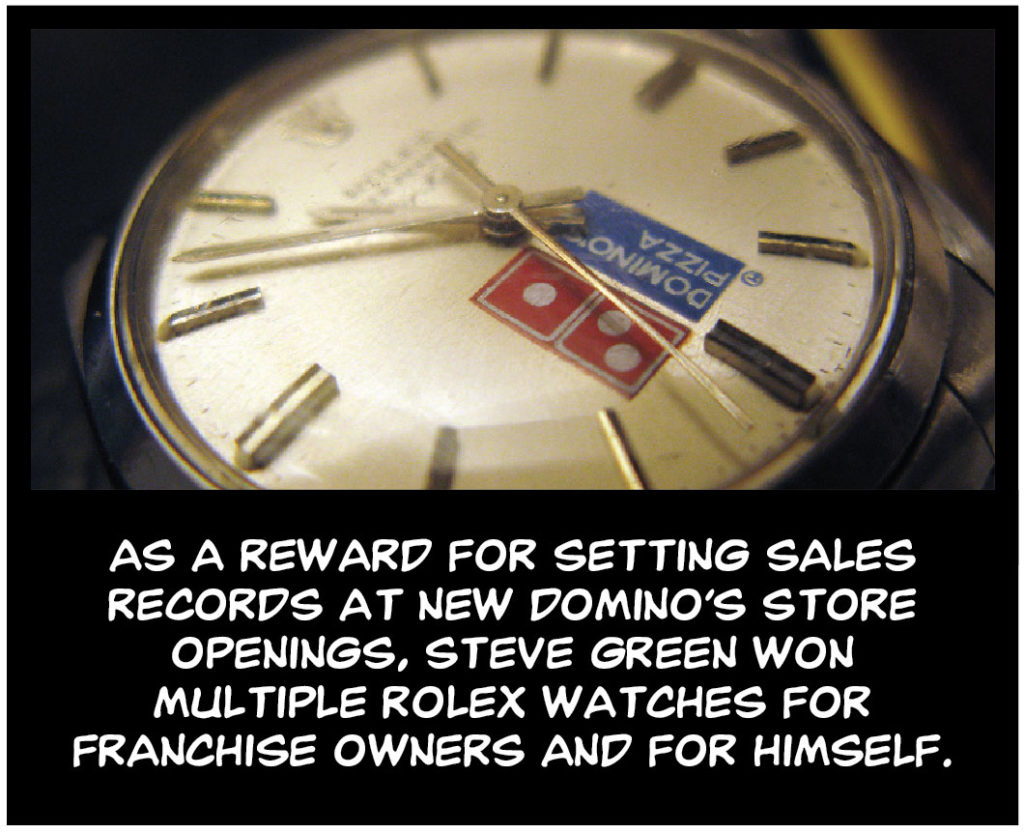
Sherlyn Clark, circulation manager: I started here in 2000 as office manager. They’d just transitioned to an actual office, and I dropped off a resume on my lunch break. Steve explained it was for the pizza industry, and I was just in awe. When I first started, our mailing list was all me. The mail truck would pull up and unload bins of returned mail; I’d have to physically go through them to remove bad addresses and address changes. One came in, and the post office had written, “In prison for killing wife.” Another was in prison for tax evasion.
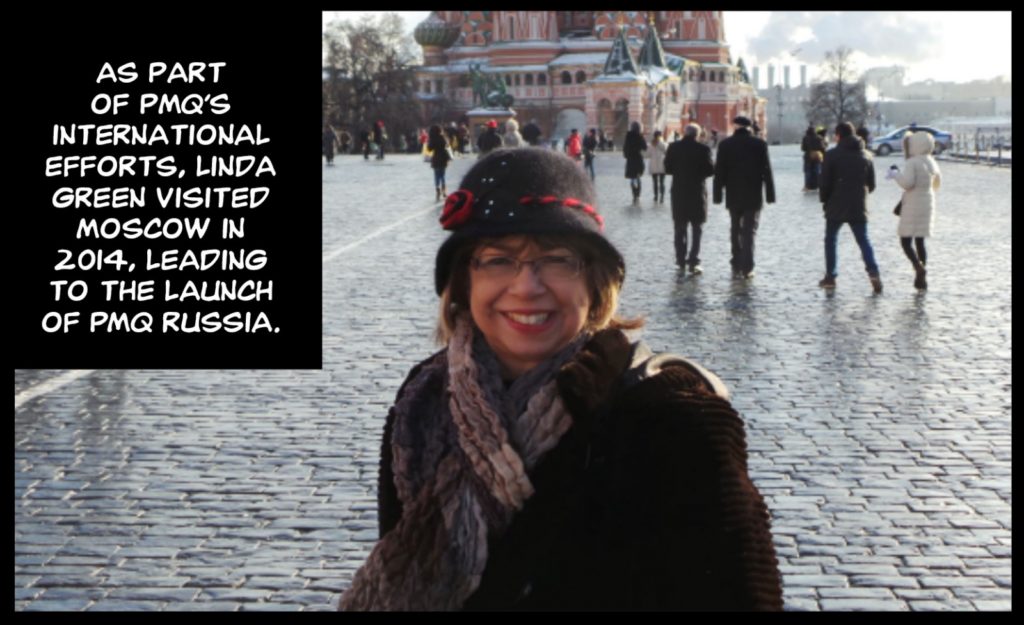

Putting in a good word |
| “Thanks for 20 years of great stories, insights and ideas! I used to print out all the Think Tanks every month and keep them on my desk in my marketing war room. I have tried, and mastered, many of those old Think Tank ideas and others that have come across the PMQ pages and website. I have accomplished many of my goals in the pizza industry with the knowledge I gained from your publication. There are just a few goals I’m still working on every day. One of those is to grace your cover.”
— Nick Bogacz, president, Caliente Pizza & Draft House, Philadelphia |
Steve: We started the U.S. Pizza Team (USPT) in 2000, and it has been a treasure trove of opportunities for so many people. A lot of people just love the name—like it’s part of the government! I was inspired by the movie Dumb and Dumber, when the Swedish Bikini Team shows up. It stuck in my head—is it real or fake? Let’s make a real one: The U.S. Pizza Team. The first year we went to Italy, we took three people to compete at the World Pizza Championship—a pizza spinner, a culinary expert, and a guy who had convinced me he made pizzas for the White House, which turned out not to be true. That was the first time an American, Tony Gemignani, won for spinning, and we got calls from the BBC. We realized that the team was publicity gold, and ever since, we’ve tried to build it, looking for the best pizza makers and spinners around the country. Our dream is for the best to compete in the name of pizza, in the name of America, worldwide. The USPT has been on Martha Stewart, Regis & Kelly, the Today show. In 2004, we used a PR guy for a New York tour, and he said in 20 years of being in PR, he never had a client that was easier to sell than the USPT.
Linda: I’m really proud of our U.S. Pizza Team. We were originally invited by an Italian magazine publisher to compete, and I was so excited to see those roots of the industry. We’ve had great sponsors believe in our team, and it’s been a great source of publicity. We even marched in the Macy’s Thanksgiving Day Parade. Pizza’s always a positive thing, and now we’ve been growing the team for 17 years.
Sherlyn: In the early days, as a mom-and-pop organization, with just a handful of us, Steve Green would sometimes sleep here. When sales clients wouldn’t call him back, he’d call them again and leave funny messages in a Jimmy Stewart imitation voice. He did a great Jimmy Stewart voice. Everyone wore multiple hats. There were many all-nighters.
Tom: Working at 3 a.m., you get creative. One night, I was reading about subliminal messages. I went to our graphic designer, Eric, and said, “Do you think you can hide a picture of a scantily clad woman on the cover?” He said, “Sure I can.” It became a regular thing. But it came to a head when Eric’s screen calibration was off on his computer. The magazines came back, and it was a little more obvious than what we saw on the screen. Once Linda got wind of it, that was over.
Sherlyn: In this particular 2004 issue, a woman called and said, “I won! I found it!” I said, “Excuse me, what did you find?” She said, “I found the person hidden in the cover.” I got the magazine and looked at it, and I’m like, “Oh, my God.” I was thinking, do we have contests I don’t know about, or is this some type of gag? Eric just had this smirk on his face. I told Steve, “Look at this cover. Just look at it.” Eric and Tommy had to fess up. There was a scantily clad woman in the oven. If they hadn’t gotten busted, they would have continued.
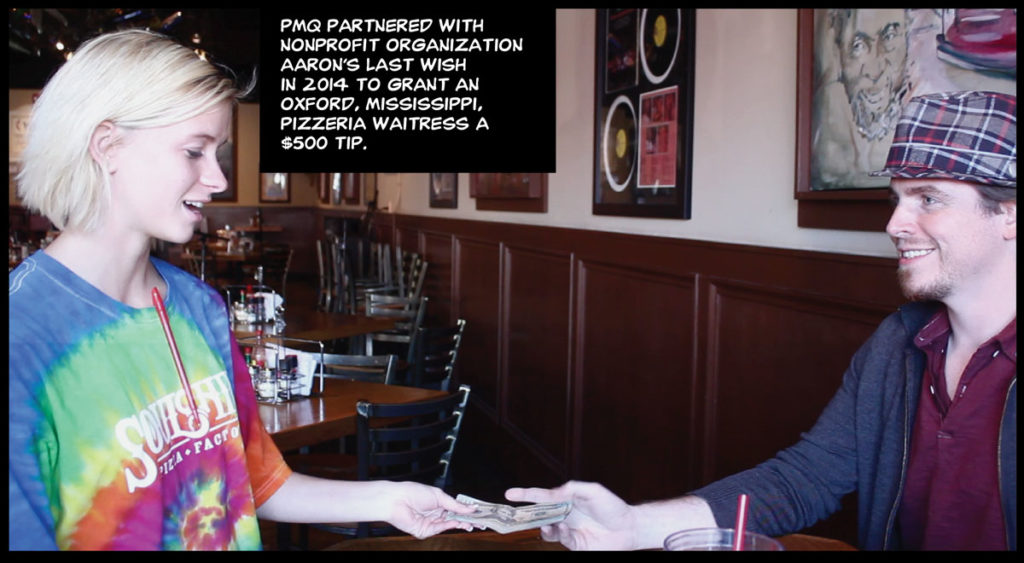
Tracy Morin, senior copy editor: Speaking of hidden messages, when I started in 2007 as copy editor, it was my job to read the entire magazine, and I found these cryptic messages at the bottom of the masthead, which lists the staff members. They’d say things like, “PMQ Magazine—Apply directly to the forehead.” No reader reads the fine print, but those got deleted straightaway. I doubt anyone ever saw them.
Eric Summers, art director: I had a lot of fun hiding things throughout the magazine back in the day. We worked some crazy hours around deadline, so it was a mischievous way to let off some steam. In one 2003 cover, I hid my wedding invitation cover and a picture of my soon-to-be-wife. The message that Tracy mentioned were a blast. Every issue I’d use a quote from movies, TV, comics, all manner of pop culture. They were silly, but it gave the magazine a fun bit of personality to the people that found them.
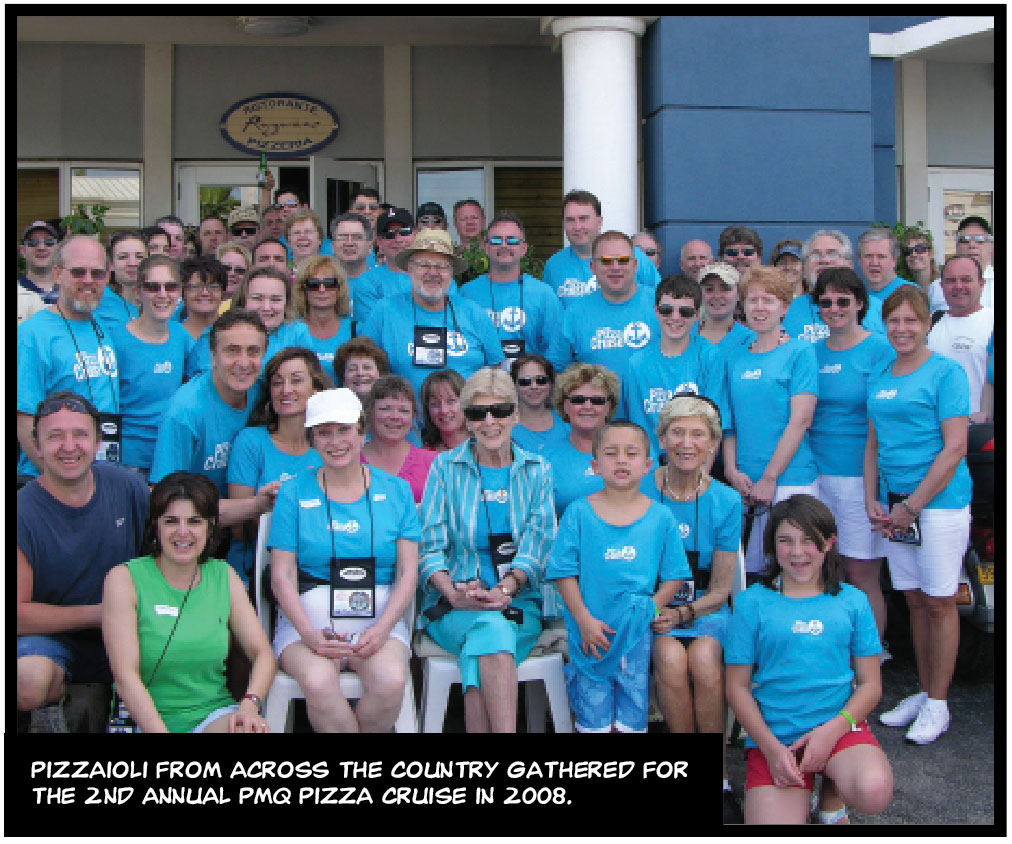
Linda: In 2006, we decided to do a Christmas cruise with our family to take Steve away from his computer and phone. But he immediately thought of the pizza industry: What if we do this with our readers, with workshops and fun presentations? Two years later, we did our first Pizza Cruise and continued to offer them for years, until the recession hit. It’s a great opportunity to relax and share with operators, learn about their concerns and understand what they’re looking for. We need to bring it back—maybe in 2018!
Liz: I’m grateful to work with a group of people who are open to suggestions and excited about change. When I took over from Tom Boyles as editor-in-chief in 2007, Steve Green embraced my editorial ideas and gave me the power to make changes. That included bringing on the best copy editor I knew, Tracy Morin, and reorganizing the general flow of the magazine. I took the great content we were already producing and repackaged it. Since then, PMQ has only gotten better, thanks to a well-chosen team of editors, designers and support staff.
Tracy: I remember the exact phone call when Liz told me she’d decided to take the editor-in-chief position, and that she needed another editor on board. The timing was perfect, and I’d already worked with Liz at a magazine publisher in California. We have totally different, complementary skill sets. After meeting with Steve and Linda—and after Liz convinced them to hire me—I immediately set to work on perfecting the magazine and immersing myself in the industry. I’d spend every free minute at work reading stuff like Jeff Varasano’s insanely complicated pizza recipe.
Liz: With pizzerias, there’s so much history, and an advertiser had sent some nostalgic newspaper to Linda. We also needed something for the back page of the magazine, so we started Time Capsule.
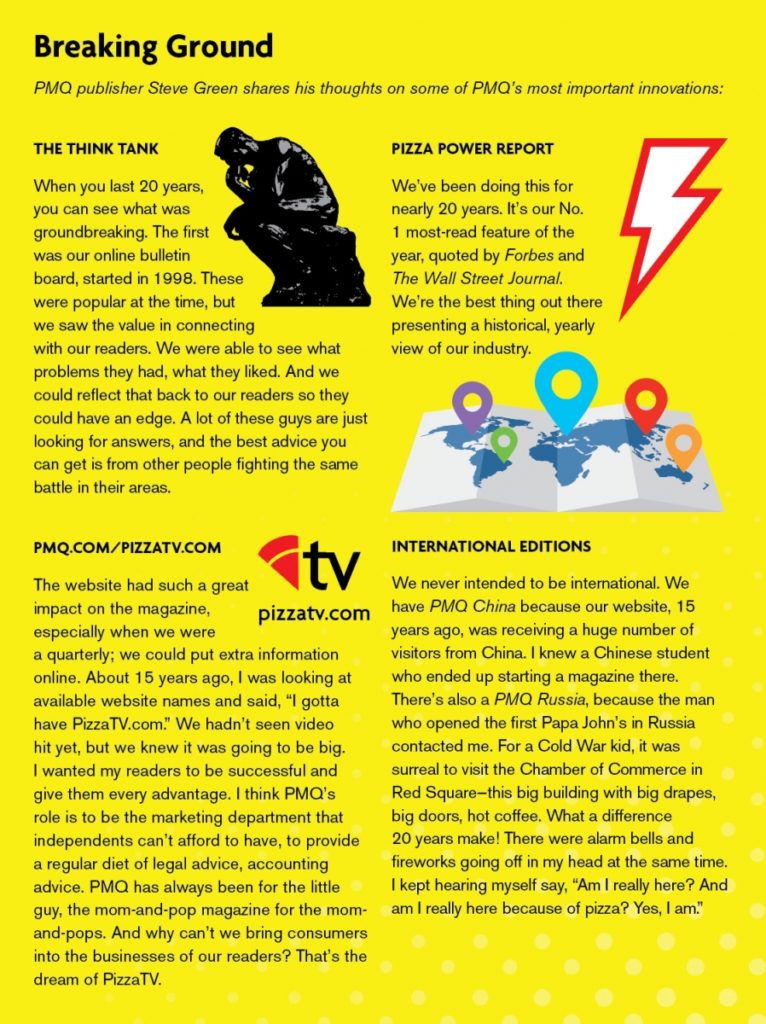
Tracy: When Liz took over at PMQ, she enacted plenty of changes, one of which was the addition of Time Capsule (now Pizza Hall of Fame), a column where we celebrate historic pizzerias (50 years or older) on the last page. I was put in charge of the column and have been writing it since it premiered in the January 2008 issue. This soon became my favorite part of the job; I’m a sucker for anything retro and loved the old pictures and stories of these hardworking people and families. When industry insiders like Scott Wiener and Tony Muia tell you that’s the first page they flip to, it’s really flattering, but what’s even better is when the profiled families themselves thank you for telling their incredible stories and even hang the stories in their pizzerias. It’s so rewarding to honor them and make PMQ a small part of their hard-earned histories.
Linda: Over the years, we had gone from a quarterly to six issues. When we grew to 40,000 circulation, I was really proud. Then to eight issues, and in 2008, nine issues a year. The industry was doing so well, but the economy wasn’t. We were worried, but we knew pizza was the backbone—people may cut out fancy steak and lobster but would continue to eat pizza. So we went to 10 times a year in 2010. We took a leap of faith, and it was well-embraced. The recession was a scary time, but we didn’t have to lay anybody off. We cut back in other areas, dug in and worked really hard. We knew we were part of a great industry, and we knew the economy would rise and fall. America’s a great country, and we felt very fortunate.
Sherlyn: In 2008, we had a presidential debate here in Oxford, and Steve decided to put up his giant inflatable pizza a week or so before the debate—no permits, permission, anything. Security was top-level, and someone from security detail called and said, “Take down the pizza or we’ll take it down for you.” It became a threat to national security. If I hadn’t answered that call, the pizza would’ve been flat the next day.
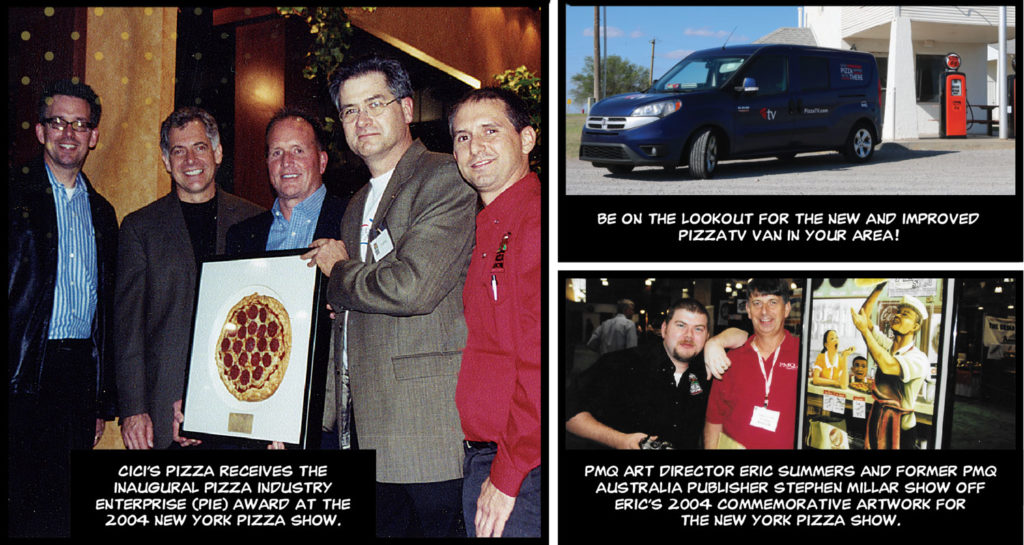
Tom: From when we started until now, I think the core of PMQ is still there: How does a regular guy make it? What makes it night and day are all the things you can do—put the magazine online, have working links, add video. Back then, from design to printer, it’d take eight to 10 days; now, it’s the next day. The quality of the magazine is a lot better.
Steve: I think I’m most proud to associate with the quality people in this industry. They’re an unusual mix. You can be successful in so many ways, based on what you bring to the table: showmanship, culinary skills, salesmanship, accounting skills. They find a way to adapt their lives to the business and find unique ways of being successful. I’m so honored to make a living traveling around, not just for the pizza, but for the people—and to share that with others who can benefit from their experiences.
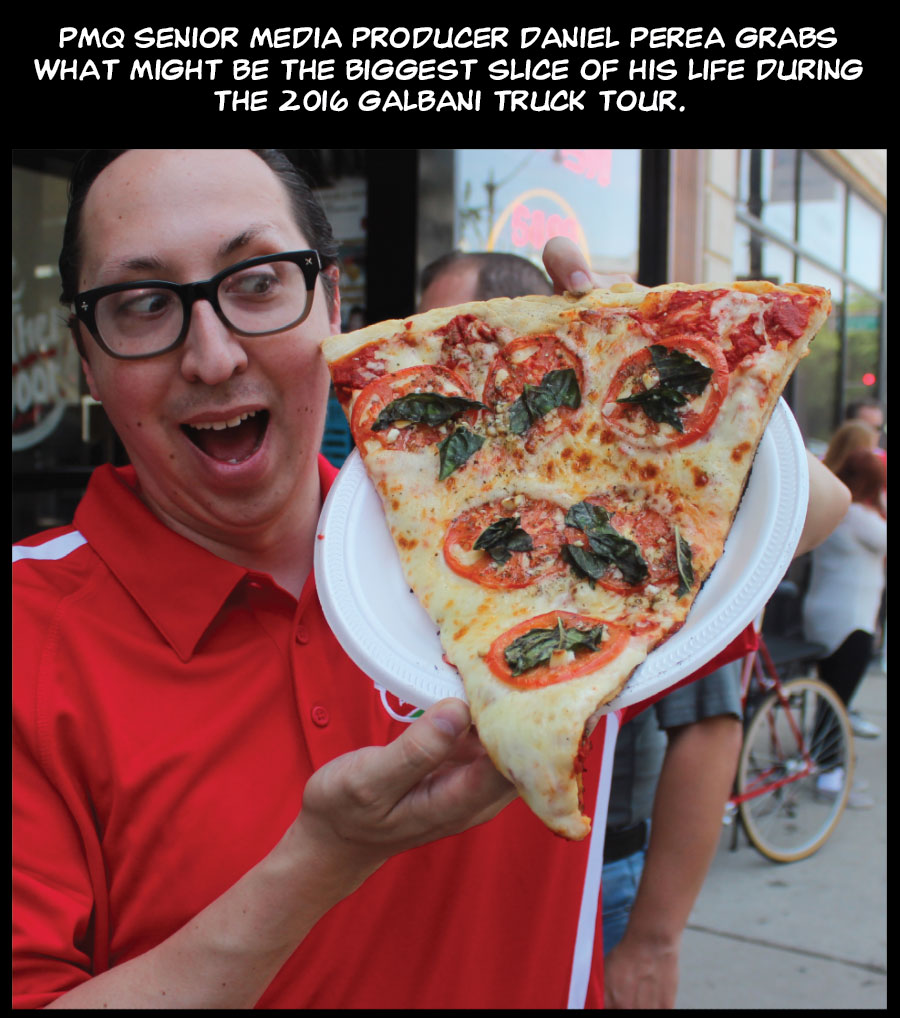
Linda: Pizza industry people are great; they’re hard-working and have a passion for what they’re doing. I’m proud to be a part of it. They’re the most amazing entrepreneurs, the backbone of America. And they’re always problem-solving. I love getting the chance to talk with them, and the vendors that help them succeed.
Tom: From when we started until now, I think the core of PMQ is still there: How does a regular guy make it? What makes it night and day are all the things you can do—put the magazine online, have working links, add video. Back then, from design to printer, it’d take eight to 10 days; now, it’s the next day. The quality of the magazine is a lot better.
Steve: I think I’m most proud to associate with the quality people in this industry. They’re an unusual mix. You can be successful in so many ways, based on what you bring to the table: showmanship, culinary skills, salesmanship, accounting skills. They find a way to adapt their lives to the business and find unique ways of being successful. I’m so honored to make a living traveling around, not just for the pizza, but for the people—and to share that with others who can benefit from their experiences.
Linda: Pizza industry people are great; they’re hard-working and have a passion for what they’re doing. I’m proud to be a part of it. They’re the most amazing entrepreneurs, the backbone of America. And they’re always problem-solving. I love getting the chance to talk with them, and the vendors that help them succeed.
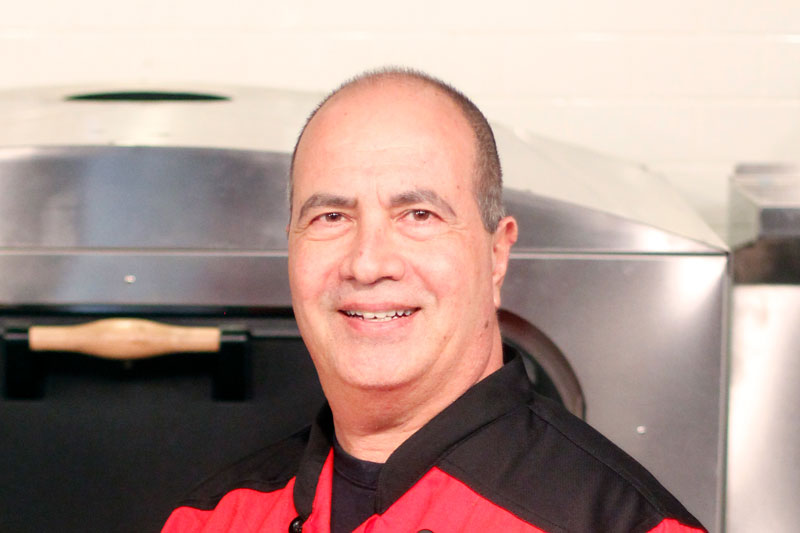
Putting in a good word |
| “The most important part of the pizza journey, the part that lasts, is the friendships we forge with likeminded colleagues. PMQ has given me an opportunity to first read about, and eventually work with, some of the greats of the American pizza scene, including Tony Muia, Gino and Lenny Rago, Michael LaMarca, and many other talented entrepreneurs and pizza makers. The memories of inaugurating the new test kitchen in Oxford, speaking on the pizza cruise, and epic pizza crawls in Chicago with Liz and Tracy are a vital part of my personal pizza highlight reel.”
— John Arena, co-owner, Metro Pizza, Las Vegas |
Tracy: PMQ isn’t just a job to me; it’s a family. Not only among our own employees (Steve and Linda Green have become like parents to me), but in the bigger family of the entire pizza industry. I’ve traveled the world eating pizza, and almost without exception, pizzeria owners welcome me to their businesses, happily feed me way too much food, and share with me their successes, challenges and dreams for the future. We’ve never been a staff that sits tucked away in a sterile office, thinking we know what’s happening out there in the industry; we’re so hands-on, constantly meeting operators to better serve them, and I think that really sets us apart.
Linda: Our industry is so family-oriented; it really inspires me. If you look at our magazines, it’s always about a person, not a piece of food. There’s a story, a person on the cover. We have great people in this industry, and we like to celebrate their stories and their lives. We’re proud of them. Pizza is a people business.
Steve: It’s been a roller coaster ride—very challenging and very satisfying. But we’ve really just followed our customers, our readers: What are they doing? What’s happened as a result of following our audience is that we’ve never been more connected than we are today. We have print, web, video, our newsletter, and interaction at the store level because we travel so much. We bathe ourselves in the industry because it’s fun, and because we want to learn and share as much as we can.
Liz: When I first joined PMQ as associate editor in 2007, I had no idea that pizza could sneak in and take over my life. Now, I’ve become a poster child for pizza among my social circle. I could probably start a pizza-themed retail store with all of the pizza paraphernalia I have. It’s kind of overtaken my home. My pizza book, Pizza: A Slice of American History, came about when a publisher contacted John Arena, from Metro Pizza in Las Vegas, to write a book about pizza. He told them to contact me. You never know what will happen when you meet a pizzeria operator!
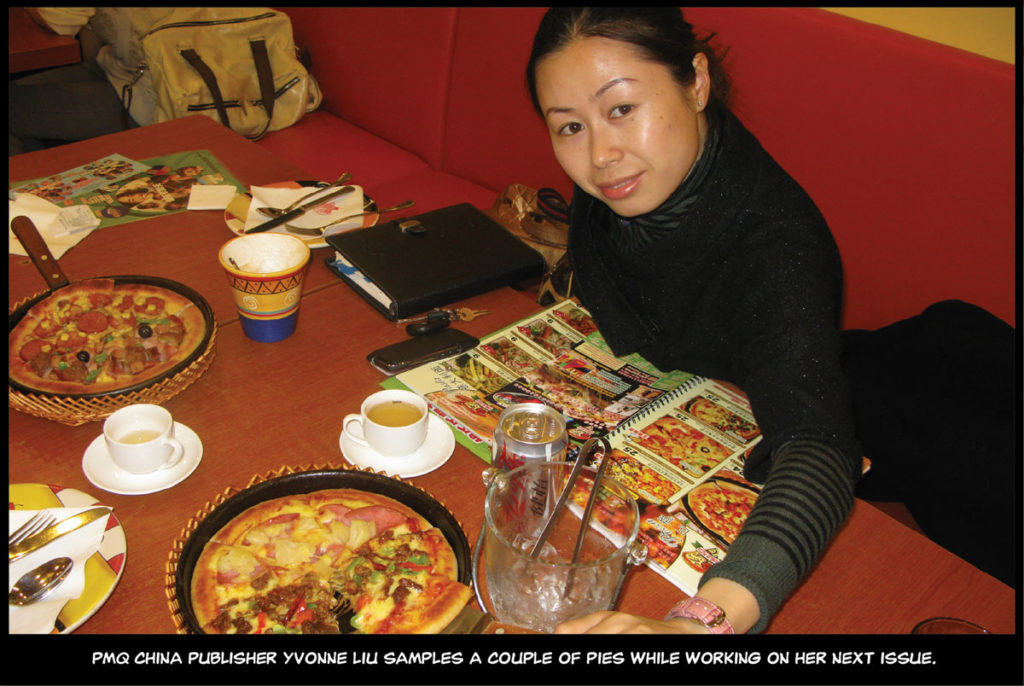
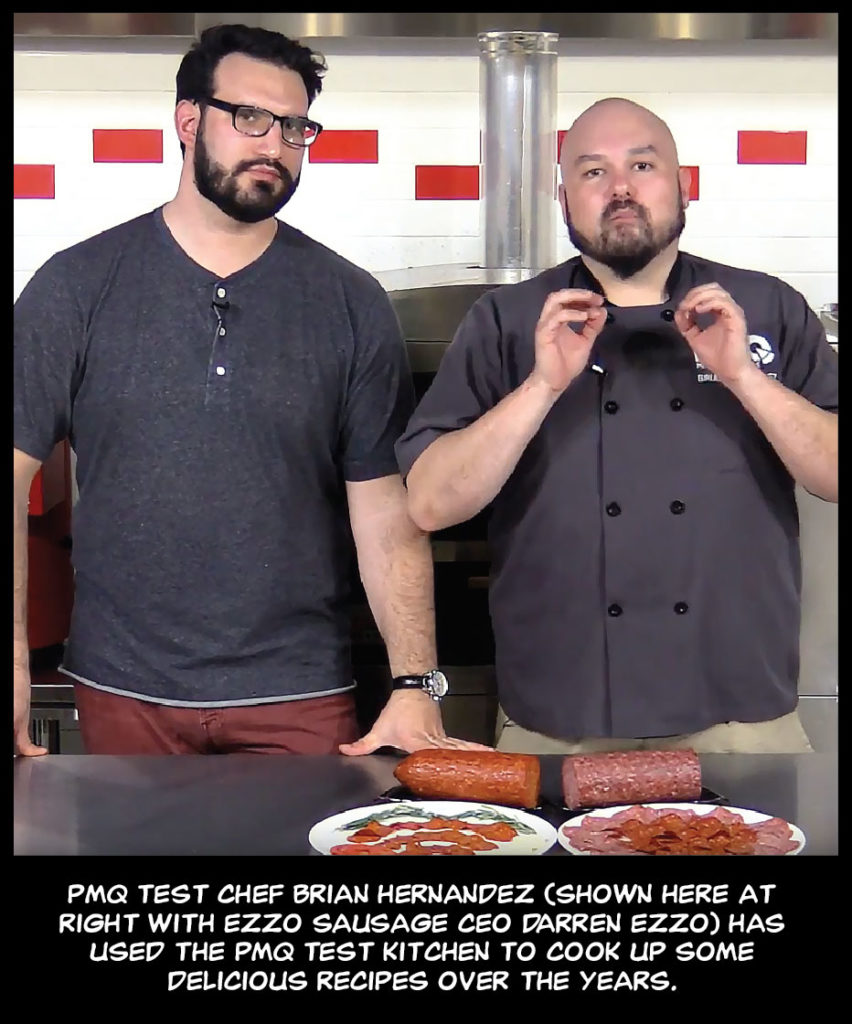
Linda: Running a pizzeria and a pizza magazine are very similar; both require a lot of attention to detail. We know it’s important to have good writers, information, products. And Steve has always listened to the readers. I actually fantasize about opening a pizzeria. I love people, and I love food, and we know so much about pizza. But it’s kind of ironic—I don’t like to cook!
Rick Hynum, editor-in-chief: I was the former editor-in-chief of Nightclub & Bar Magazine and had moved back and forth between newspapers and magazines for most of my career. I joined PMQ as the associate editor in late 2011. My first six or so months here were challenging, not because of the work itself, but because I was constantly staring at pictures of pizzas and reading pizza recipes and thinking and writing about pizza, so all I wanted to do was eat pizza. I’ve always loved pizza, but I never realized just what a weakness I had for it until I became immersed in pizza journalism. About six months after I started here, Liz decided to branch out and do other things, so I became editor-in-chief and quickly established myself as the resident pain-in-the-neck, always pushing deadlines and trying to get us ahead and stay ahead.
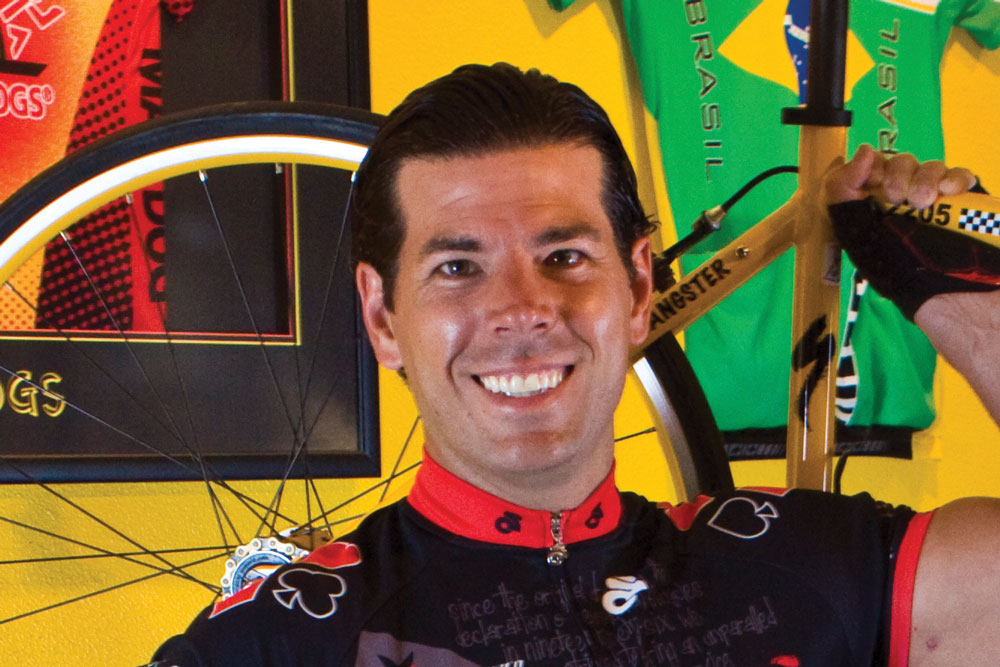
Putting in a good word |
| “As the inventor of the Pizza Diet, I have dedicated my career to changing the image of pizza from a junk food to a health food. I entered this industry 13 years ago with no restaurant experience or culinary background. Discovering the PMQ.com website was my lifeline in 2004, as I was able to find creative pizza recipes, marketing ideas, dough proofing techniques, and countless relevant tips. Undoubtedly, PMQ saved my career, and I will forever be grateful to the PMQ family. Thank you to the countless pizzaiolos who have selflessly dedicated their knowledge to PMQ over the past 20 years. I’m honored to share this journey with you all!”
— Matt McClellan, founder, Tour De Pizza, St. Petersburg, Florida |
Tom: I had gone off to publish the Australia edition of PMQ, but when the economy tanked, their restaurant economy didn’t recover as it did here. At that point, I thought, “I want to go back to PMQ.” This is a fun business. It’s pizza. In what other job do you have a full-blown pizzeria in the back of the office? It’s hard to stay away. People in this industry are having the time of their lives, and we’re in the fortunate position of getting to witness and document it. They had an opening for sales, and having been an editor has really helped me talk to businesses that want to sell to pizzerias—I know what operators are doing and what they need. We’re not some big corporate magazine. We’re a tight-knit family.
Liz: People say, “How many things can you say about pizza?” But it’s constantly changing. Working with people who are constantly curious, with constant ideas, like Steve Green, is great—you learn to never stop looking and searching. Even if an idea doesn’t work out, Steve will try it. And that’s how operators should be, too.
Linda: Steve believed in video before it was popular. It’s amazing to me. In the early days of PizzaTV, he wanted to get a video out on DVD. We spent probably a year producing it, and it was so expensive; I probably cried when I had to write the check for this DVD. But Steve is not afraid to try new things. He’d be one of the first men to walk on the moon. He’s so curious about our industry, and he’s not afraid to discover new things. When Steve Jobs created the first online order delivery for pizza in the mid-’90s, he was there.
Steve: I think my curiosity is my biggest weapon. That’s another reason I like this industry—there are a lot of curious people. I get adrenaline when I go to a trade show. I want to know the latest ideas; that’s what drives me. I want to live in a world of ideas. And I’ve had some pizza that’s so good, it almost made me cry.
Rick: I maintain that pizza is the world’s most popular food, the world’s greatest food. Pizza lifts spirits and brings people together. So as a longtime journalist who now covers the pizza industry, I feel like I’ve won the lottery for sure. I don’t have to deal with crooked politicians or write about heinous crimes and car wrecks. I work at an office with a pizza oven and a pizza kitchen and a pizza chef! I mean, how lucky can you get?
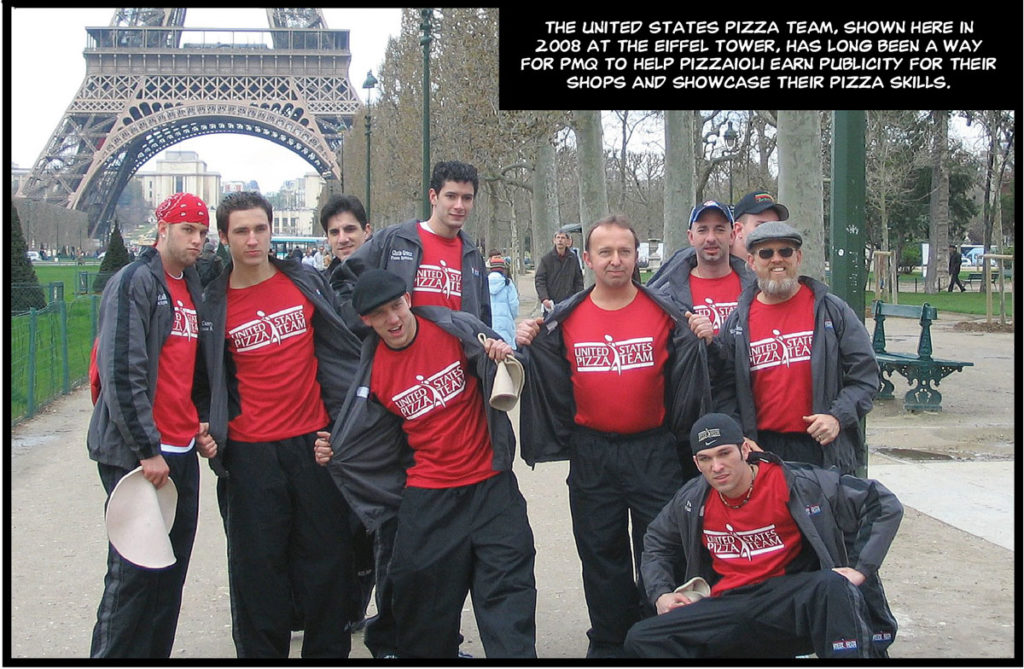
Steve: We’ll continue to balance what our readers want to see with what they need to see. And the other question is, how are they going to see it? Content that puts money in their pockets—that’s always been the main purpose of PMQ. One thing our readers will see more is video.
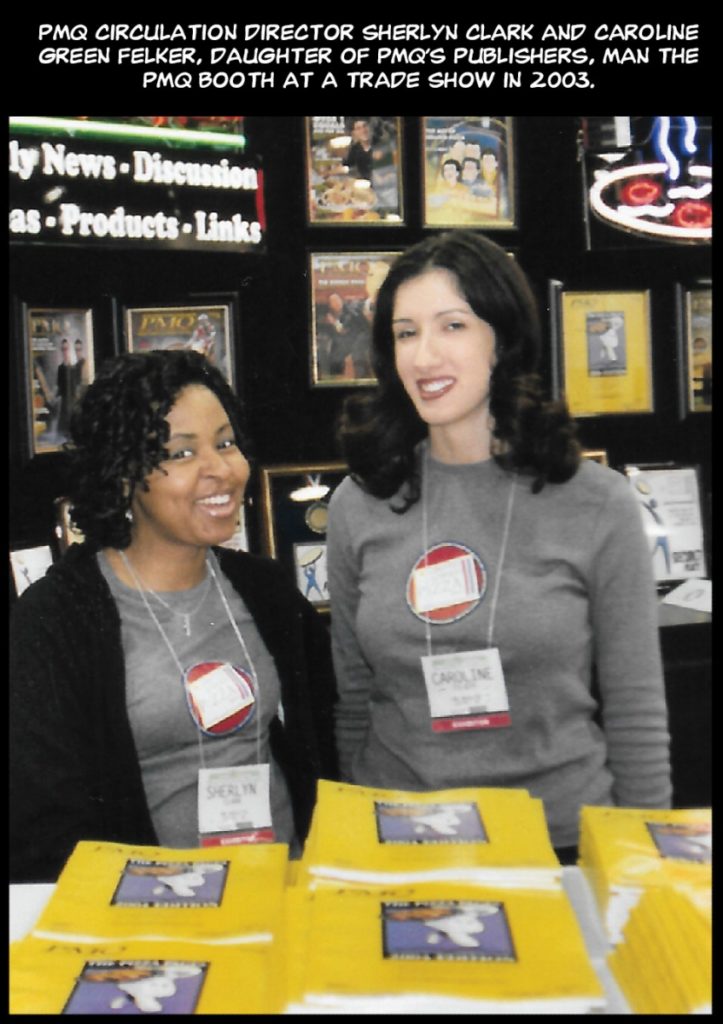
Linda: It’s so heartwarming and exciting to get feedback from the industry. It’s nice to know when you work so hard that you help change lives. We hear great success stories from pizzerias, and that’s why we continue to grow. It’s a win for everybody.
PMQ started as a family business, and all three of our children have been involved in it. They’d walk the trade shows with us. Now, our daughter is our international correspondent. Many of our employees have worked for us for a long time. People work hard, stay with us, and have the same passion for the industry as we do.
Steve: We’re directly having an impact on people’s families. When you think about our readers and all the people they connect with, it’s a great honor to be in their lives and possibly have a positive impact on them, their employees and their vendors. It’s a whole domino effect.
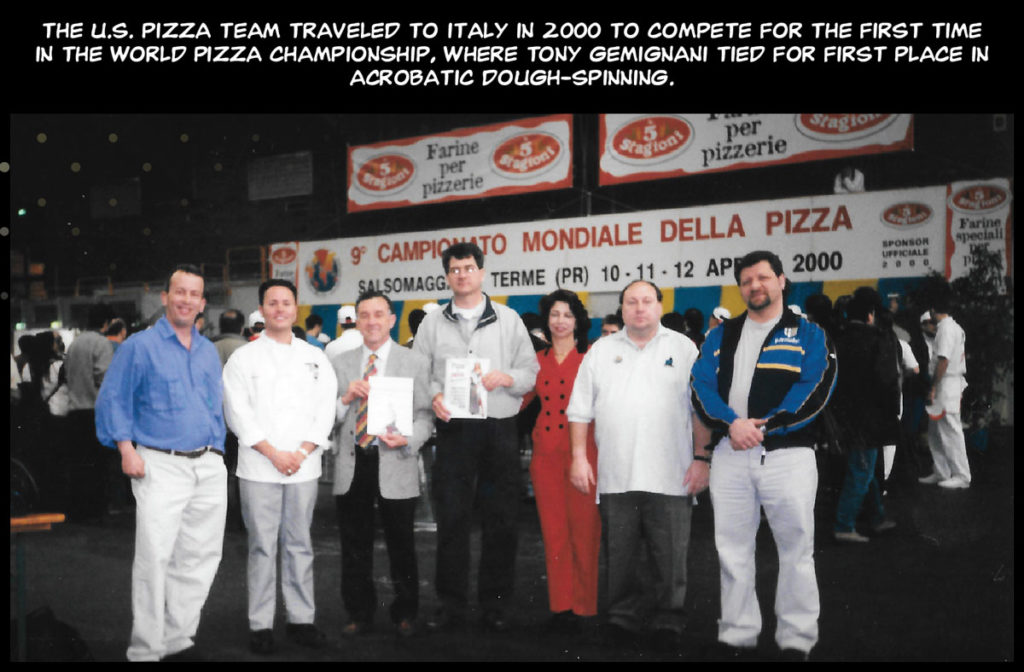
Interviews have been edited and condensed for length, content and clarity.



